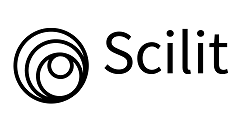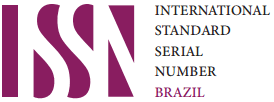Directrices de la Asociación Brasileña de Psiquiatría para el manejo de la conducta suicida: intervención
traducción revisada y ampliada de: https://doi.org/10.1590/1516-4446-2020-1108
DOI:
https://doi.org/10.25118/2763-9037.2024.v14.1262Palabras clave:
Suicidio, suicidio consumado, intento de suicidio, desordenes mentales, guíaResumen
La complejidad de las conductas suicidas requiere un enfoque multifacético para su manejo, que incluya la evaluación de los factores de riesgo y de protección, así como las intervenciones adecuadas. La Asociación Brasileña de Psiquiatría (ABP), a través de su Comision de Emergencias Psiquiátricas, desarrolló directrices específicas para el manejo de pacientes con conducta suicida, centrándose en el cribado, la intervención, la prevención y la promoción de la salud mental. Aunque la evidencia disponible todavía presenta controversias y limitaciones, ahora es posible identificar la efectividad de determinadas intervenciones para grupos específicos de pacientes. La recomendación actual incluye la combinación de varias técnicas, como el Plan de Seguridad, que integra la evaluación de factores de riesgo y protección con medidas terapéuticas posteriores. Se destaca la necesidad de investigaciones adicionales para aclarar enfoques con potencial específico de intervención, siempre con el objetivo de optimizar las estrategias de manejo de la conducta suicida e incorporarlas a las políticas de salud pública.
Descargas
Métricas
Citas
Baldaçara L, Grudtner RR, Leite VS, Porto DM, Robis KP, Fidalgo TM, Rocha GA, Diaz AP, Meleiro A, Correa H, Tung TC, Malloy-Diniz L, Quevedo J, Silva AG. Brazilian Psychiatric Association guidelines for the management of suicidal behavior. Part 2. Screening, intervention, and prevention. Braz J Psychiatry. 2021;43(5):538-49. https://doi.org/10.1590/1516-4446-2020-1108 PMID:33331533 PMCID:PMC8555636
Baldaçara L, Rocha GA, Leite VS, Porto DM, Grudtner RR, Diaz AP, Meleiro A, Correa H, Tung TC, Quevedo J, Silva AG. Brazilian Psychiatric Association guidelines for the management of suicidal behavior. Part 1. Risk factors, protective factors, and assessment. Braz J Psychiatry. 2021;43(5):525-37. https://doi.org/10.1590/1516-4446-2020-0994 PMID:33111773 PMCID:PMC8555650
Baldaçara L, Weber CAT, Gorender M, Grudtner RR, Peu S, Teles ALS, Passos IC, Quevedo J, Silva AG. Brazilian Psychiatric Association guidelines for the management of suicidal behavior. Part 3. Suicide prevention hotlines. Braz J Psychiatry. 2023;45(1):54-61. https://doi.org/10.47626/1516-4446-2022-2536 PMID:35809251 PMCID:PMC9976911
Milner AJ, Carter G, Pirkis J, Robinson J, Spittal MJ. Letters, green cards, telephone calls and postcards: systematic and meta-analytic review of brief contact interventions for reducing self-harm, suicide attempts and suicide. Br J Psychiatry. 2015;206(3):184-90. https://doi.org/10.1192/bjp.bp.114.147819 PMID:25733570
Noh D, Park YS, Oh EG. Effectiveness of telephone-delivered interventions following suicide attempts: a systematic review. Arch Psychiatr Nurs. 2016;30(1):114-9. https://doi.org/10.1016/j.apnu.2015.10.012 PMID:26804512
Boudreaux ED, Miller I, Goldstein AB, Sullivan AF, Allen MH, Manton AP, Arias SA, Camargo CA Jr. The Emergency Department Safety Assessment and Follow-up Evaluation (ED-SAFE): method and design considerations. Contemp Clin Trials. 2013;36(1):14-24. https://doi.org/10.1016/j.cct.2013.05.008 PMID:23707435 PMCID:PMC3979300
Stanley B, Brown GK, Currier GW, Lyons C, Chesin M, Knox KL. Brief intervention and follow-up for suicidal patients with repeat emergency department visits enhances treatment engagement. Am J Public Health. 2015;105(8):1570-2. https://doi.org/10.2105/ajph.2015.302656 PMID:26066951 PMCID:PMC4504270
Departament of Veterans Affairs (US); Department of Defense (US). VA/DoD clinical practice guidelines: assessment and management of patients at risk for suicide. Washington: VA/DoD; 2013. http://www.healthquality.va.gov/guidelines/MH/srb/VADODCP_SuicideRisk_Full.pdf
Baldaçara L, Pettersen AG, Leite VDS, Ismael F, Motta CP, Freitas RA, Fasanella NA, Pereira LA, Barros MEL, Barbosa L, Teles ALS, Palhano R, Guimarães HP, Braga MA, Castaldelli-Maia JM, Bicca C, Gligliotti A, Marques ACPR, Silva AG. Brazilian psychiatric association consensus for the management of acute intoxication. General management and specific interventions for drugs of abuse. Trends Psychiatry Psychother. 2022. https://doi.org/10.47626/2237-6089-2022-0571 PMID:36463505
Wasserman D, Hoven CW, Wasserman C, Wall M, Eisenberg R, Hadlaczky G, Kelleher I, Sarchiapone M, Apter A, Balazs J, Bobes J, Brunner R, Corcoran P, Cosman D, Guillemin F, Haring C, Iosue M, Kaess M, Kahn JP, Keeley H, Musa GJ, Nemes B, Postuvan V, Saiz P, Reiter-Theil S, Varnik A, Varnik P, Carli V. School-based suicide prevention programmes: the SEYLE cluster-randomised, controlled trial. Lancet. 2015;385(9977):1536-44. https://doi.org/10.1016/s0140-6736(14)61213-7 PMID:25579833
Crawford MJ, Thomas O, Khan N, Kulinskaya E. Psychosocial interventions following self-harm: systematic review of their efficacy in preventing suicide. Br J Psychiatry. 2007;190:11-7. https://doi.org/10.1192/bjp.bp.106.025437 PMID:17197651
Calati R, Courtet P. Is psychotherapy effective for reducing suicide attempt and non-suicidal self-injury rates? Meta-analysis and meta-regression of literature data. J Psychiatr Res. 2016;79:8-20. https://doi.org/10.1016/j.jpsychires.2016.04.003 PMID:27128172
Meerwijk EL, Parekh A, Oquendo MA, Allen IE, Franck LS, Lee KA. Direct versus indirect psychosocial and behavioural interventions to prevent suicide and suicide attempts: a systematic review and meta-analysis. Lancet Psychiatry. 2016;3(6):544-54. https://doi.org/10.1016/s2215-0366(16)00064-x PMID:27017086
Cuijpers P, de Beurs DP, van Spijker BA, Berking M, Andersson G, Kerkhof AJ. The effects of psychotherapy for adult depression on suicidality and hopelessness: a systematic review and meta-analysis. J Affect Disord. 2013;144(3):183-90. https://doi.org/10.1016/j.jad.2012.06.025 PMID:22832172
Silva AG, Malloy-Diniz LF, Garcia MS, Figueiredo CGS, Figueiredo RN, Diaz AP, Palha AP. Cognition as a therapeutic target in the suicidal patient approach. Front Psychiatry. 2018;9:31. https://doi.org/10.3389/fpsyt.2018.00031 PMID:29487542 PMCID:PMC5816899
Agência Nacional de Vigilância Sanitária. SPRAVATO ® (cloridrato de escetamina): novo registo. Brasília: ANVISA; 2020. https://www.gov.br/anvisa/pt-br/assuntos/medicamentos/novos-medicamentos-e-indicacoes/spravato-r-cloridrato-de-escetamina-novo-registo
Dold M, Bartova L, Fugger G, Kautzky A, Souery D, Mendlewicz J, Papadimitriou GN, Dikeos D, Ferentinos P, Porcelli S, Serretti A, Zohar J, Montgomery S, Kasper S. Major Depression and the degree of suicidality: results of the European Group for the Study of Resistant Depression (GSRD). Int J Neuropsychopharmacol. 2018;21(6):539-49. https://doi.org/10.1093/ijnp/pyy009 PMID:29860382 - PMCID:PMC6007240
Kaminski JA, Bschor T. Antidepressants and suicidality: a re-analysis of the re-analysis. J Affect Disord. 2020;266:95-9. https://doi.org/10.1016/j.jad.2020.01.107 PMID:32056952
Brent DA. Antidepressants and suicidality. Psychiatr Clin North Am. 2016;39(3):503-12. https://doi.org/10.1016/j.psc.2016.04.002 PMID:27514302
Gibbons RD, Brown CH, Hur K, Davis J, Mann JJ. Suicidal thoughts and behavior with antidepressant treatment: reanalysis of the randomized placebo-controlled studies of fluoxetine and venlafaxine. Arch Gen Psychiatry. 2012;69(6):580-7. https://doi.org/10.1001/archgenpsychiatry.2011.2048 PMID:22309973 - PMCID:PMC3367101
Kaizar EE, Greenhouse JB, Seltman H, Kelleher K. Do antidepressants cause suicidality in children? A Bayesian meta-analysis. Clin Trials. 2006;3(2):73-90; discussion 91-8. https://doi.org/10.1191/1740774506cn139oa PMID:16773951
Kennedy SH, Lam RW, McIntyre RS, Tourjman SV, Bhat V, Blier P, Hasnain M, Jollant F, Levitt AJ, MacQueen GM, McInerney SJ, McIntosh D, Milev RV, Müller DJ, Parikh SV, Pearson NL, Ravindran AV, Uher R; CANMAT Depression Work Group. Canadian Network for Mood and Anxiety Treatments (CANMAT) 2016 clinical guidelines for the management of adults with major depressive disorder: section 3. Pharmacological Treatments. Can J Psychiatry. 2016;61(9):540-60. https://doi.org/10.1177/0706743716659417 PMID:27486148 PMCID:PMC4994790
Asenjo Lobos C, Komossa K, Rummel-Kluge C, Hunger H, Schmid F, Schwarz S, Leucht S. Clozapine versus other atypical antipsychotics for schizophrenia. Cochrane Database Syst Rev. 2010;(11):CD006633. https://doi.org/10.1002/14651858.cd006633.pub2 PMID:21069690 PMCID:PMC4169186
Hennen J, Baldessarini RJ. Suicidal risk during treatment with clozapine: a meta-analysis. Schizophr Res. 2005;73(2-3):139-45. https://doi.org/10.1016/j.schres.2004.05.015 PMID:15653256
Pompili M, Baldessarini RJ, Forte A, Erbuto D, Serafini G, Fiorillo A, Amore M, Girardi P. Do atypical antipsychotics have antisuicidal effects? A hypothesis-generating overview. Int J Mol Sci. 2016;17(10):1700. https://doi.org/10.3390/ijms17101700 PMID:27727180 - PMCID:PMC5085732
Lima AF, Miguel SR, Cohen M, Zimmermann JJ, Shansis FM, Cruz LN, Ziegelmann PK, Polanczyk CA, Fleck MP. Effectiveness evaluation of mood disorder treatment algorithms in Brazilian public healthcare patients. Braz J Psychiatry. 2018;40(1):26-34. https://doi.org/10.1590/1516-4446-2016-2147 PMID:28832750 PMCID:PMC6899428
Wilkinson ST, Ballard ED, Bloch MH, Mathew SJ, Murrough JW, Feder A, Sos P, Wang G, Zarate CA Jr, Sanacora G. The effect of a single dose of intravenous ketamine on suicidal ideation: a systematic review and individual participant data meta-analysis. Am J Psychiatry. 2018;175(2):150-8. https://doi.org/10.1176/appi.ajp.2017.17040472 PMID:28969441 PMCID:PMC5794524
Bartoli F, Riboldi I, Crocamo C, Di Brita C, Clerici M, Carrà G. Ketamine as a rapid-acting agent for suicidal ideation: a meta-analysis. Neurosci Biobehav Rev. 2017;77:232-6. https://doi.org/10.1016/j.neubiorev.2017.03.010 PMID:28342764
Yatham LN, Kennedy SH, Parikh SV, Schaffer A, Bond DJ, Frey BN, Sharma V, Goldstein BI, Rej S, Beaulieu S, Alda M, MacQueen G, Milev RV, Ravindran A, O'Donovan C, McIntosh D, Lam RW, Vazquez G, Kapczinski F, McIntyre RS, Kozicky J, Kanba S, Lafer B, Suppes T, Calabrese JR, Vieta E, Malhi G, Post RM, Berk M. Canadian Network for Mood and Anxiety Treatments (CANMAT) and International Society for Bipolar Disorders (ISBD) 2018 guidelines for the management of patients with bipolar disorder. Bipolar Disord. 2018;20(2):97-170. https://doi.org/10.1111/bdi.12609 PMID:29536616 - PMCID:PMC5947163
Bahji A, Vazquez GH, Zarate CA Jr. Comparative efficacy of racemic ketamine and esketamine for depression: a systematic review and meta-analysis. J Affect Disord. 2021;278:542-55. https://doi.org/10.1016/j.jad.2020.09.071 PMID:33022440 PMCID:PMC7704936
Cipriani A, Hawton K, Stockton S, Geddes JR. Lithium in the prevention of suicide in mood disorders: updated systematic review and meta-analysis. BMJ. 2013;346:f3646. https://doi.org/10.1136/bmj.f3646 PMID:23814104
Baldessarini RJ, Tondo L, Davis P, Pompili M, Goodwin FK, Hennen J. Decreased risk of suicides and attempts during long-term lithium treatment: a meta-analytic review. Bipolar Disord. 2006;8(5 Pt 2):625-39. https://doi.org/10.1111/j.1399-5618.2006.00344.x PMID:17042835
Tondo L, Alda M, Bauer M, Bergink V, Grof P, Hajek T, Lewitka U, Licht RW, Manchia M, Muller-Oerlinghausen B, Nielsen RE, Selo M, Simhandl C, Baldessarini RJ; International Group for Studies of Lithium (IGSLi). Clinical use of lithium salts: guide for users and prescribers. Int J Bipolar Disord. 2019;7(1):16. https://doi.org/10.1186/s40345-019-0151-2 PMID:31328245 PMCID:PMC6643006
Riblet NBV, Shiner B, Young-Xu Y, Watts BV. Strategies to prevent death by suicide: meta-analysis of randomised controlled trials. Br J Psychiatry. 2017;210(6):396-402. https://doi.org/10.1192/bjp.bp.116.187799 PMID:28428338
Baldaçara L, Diaz AP, Leite V, Pereira LA, Santos RM, Gomes Júnior VP, Calfat ELB, Ismael F, Périco CAM, Porto DM, Zacharias CEK, Cordeiro Q, Silva AG, Tung TC. Brazilian guidelines for the management of psychomotor agitation. Part 2. Pharmacological approach. Braz J Psychiatry. 2019;41(4):324-35. https://doi.org/10.1590/1516-4446-2018-0177 PMID:30843960 PMCID:PMC6804299
Baldaçara L, Ismael F, Leite V, Pereira LA, Santos RM, Gomes Júnior VP, Calfat ELB, Diaz AP, Périco CAM, Porto DM, Zacharias CE, Cordeiro Q, Silva AG, Tung TC. Brazilian guidelines for the management of psychomotor agitation. Part 1. Non-pharmacological approach. Braz J Psychiatry. 2019;41(2):153-67. https://doi.org/10.1590/1516-4446-2018-0163 PMID:30540028 PMCID:PMC6781680
Baldaçara L, Ismael F, Leite VS, Figueiredo RNS, Pereira LA, Vasques DAC, Calfat ELB, Rizkalla A, Périco CAM, Porto DM, Zacharias CEK, Santos RM, Gomes Júnior VP, Cordeiro Q, Silva AG, Tung TC, Díaz AP. Diretrizes brasileiras para o manejo da agitação psicomotora: cuidados gerais e avaliação. Debates Psiquiatr. 2021;11(1):8-20. https://doi.org/10.25118/2763-9037.2021.v11.12
Garriga M, Pacchiarotti I, Kasper S, Zeller SL, Allen MH, Vázquez G, Baldaçara L, San L, McAllister-Williams RH, Fountoulakis KN, Courtet P, Naber D, Chan EW, Fagiolini A, Moller HJ, Grunze H, Llorca PM, Jaffe RL, Yatham LN, Hidalgo-Mazzei D, Passamar M, Messer T, Bernardo M, Vieta E. Assessment and management of agitation in psychiatry: expert consensus. World J Biol Psychiatry. 2016;17(2):86-128. https://doi.org/10.3109/15622975.2015.1132007 PMID:26912127
Baldaçara L, Pinto FI, Leite VS, Figueiredo RNS, Pereira LA, Vasques DAC, Calfat ELB, Riskalla A, Périco CAM, Porto DM, Zacharias CEK, Santos RM, Gomes Júnior VP, Cordeiro Q, Silva AG, Teng TC, Díaz AP. Diretrizes brasileiras para o manejo da agitação psicomotora: abordagem farmacológica 1 - tranquilização rápida. Debates Psiquiatr. 2021;11(1):28-35. https://doi.org/10.25118/2763-9037.2021.v11.11
Baldaçara L, Ismael F, Leite VS, Figueiredo RNS, Pereira LA, Vasques DAC, Calfat ELB, Riskalla A, Périco CAM, Porto DM, Zacharias CEK, Santos RM, Gomes Júnior VP, Cordeiro Q, Silva AG, Teng TC, Díaz AP. Diretrizes brasileiras para o manejo da agitação psicomotora: tranquilização rápida 2 - combinações e grupos especiais. Debates Psiquiatr. 2021;11(1):38-58. https://doi.org/10.25118/2763-9037.2021.v11.14
Baldaçara L, Ismael F, Leite VS, Figueiredo RNS, Pereira LA, Vasques DAC, Calfat ELB, Riskalla A, Périco CAM, Porto DM, Zacharias CEK, Santos RM, Gomes Júnior VP, Cordeiro Q, Silva AG, Teng TC, Díaz AP. Diretrizes brasileiras para o manejo da agitação psicomotora: técnicas de comunicação e contenção física. Debates Psiquiatr. 2021;11(1):22-7. https://doi.org/10.25118/2763-9037.2021.v11.13
Work Group on Suicidal Behaviors. Practice guideline for the assessment and treatment of patients with suicidal behaviors. In: Association AP, ed. Arlington:2003.
Kho KH, van Vreeswijk MF, Simpson S, Zwinderman AH. A meta-analysis of electroconvulsive therapy efficacy in depression. J ECT. 2003;19(3):139-47. https://doi.org/10.1097/00124509-200309000-00005 PMID:12972983
Milev RV, Giacobbe P, Kennedy SH, Blumberger DM, Daskalakis ZJ, Downar J, Modirrousta M, Patry S, Vila-Rodriguez F, Lam RW, MacQueen GM, Parikh SV, Ravindran AV; CANMAT Depression Work Group. Canadian Network for Mood and Anxiety Treatments (CANMAT) 2016 clinical guidelines for the management of adults with major depressive disorder: section 4. neurostimulation treatments. Can J Psychiatry. 2016;61(9):561-75. https://doi.org/10.1177/0706743716660033 PMID:27486154 PMCID:PMC4994792
Rosenquist PB, Youssef NA, Surya S, McCall WV. When all else fails: the use of electroconvulsive therapy for conditions other than major depressive episode. Psychiatr Clin North Am. 2018;41(3):355-71. https://doi.org/10.1016/j.psc.2018.04.002 PMID:30098650
Zheng W, Cao XL, Ungvari GS, Xiang YQ, Guo T, Liu ZR, Wang YY, Forester BP, Seiner SJ, Xiang YT. Electroconvulsive therapy added to non-clozapine antipsychotic medication for treatment resistant schizophrenia: meta-analysis of randomized controlled trials. PLoS One. 2016;11(6):e0156510. https://doi.org/10.1371/journal.pone.0156510 PMID:27285996 PMCID:PMC4902215
Hermida AP, Glass OM, Shafi H, McDonald WM. Electroconvulsive therapy in depression: current practice and future direction. Psychiatr Clin North Am. 2018;41(3):341-53. https://doi.org/10.1016/j.psc.2018.04.001 PMID:30098649
Ward HB, Fromson JA, Cooper JJ, Oliveira G, Almeida M. Recommendations for the use of ECT in pregnancy: literature review and proposed clinical protocol. Arch Womens Ment Health. 2018;21(6):715-22. https://doi.org/10.1007/s00737-018-0851-0 PMID:29796968
Liang CS, Chung CH, Ho PS, Tsai CK, Chien WC. Superior anti-suicidal effects of electroconvulsive therapy in unipolar disorder and bipolar depression. Bipolar Disord. 2018;20(6):539-46. https://doi.org/10.1111/bdi.12589 PMID:29227012
Methfessel I, Sartorius A, Zilles D. Electroconvulsive therapy against the patients' will: a case series. World J Biol Psychiatry. 2018;19(3):236-42. https://doi.org/10.1080/15622975.2017.1293296 PMID:28299981
Grover S, Sahoo S, Rabha A, Koirala R. ECT in schizophrenia: a review of the evidence. Acta Neuropsychiatr. 2019;31(3):115-27. https://doi.org/10.1017/neu.2018.32 PMID:30501675
Phutane VH, Thirthalli J, Kesavan M, Kumar NC, Gangadhar BN. Why do we prescribe ECT to schizophrenia patients? Indian J Psychiatry. 2011;53(2):149-51. https://doi.org/10.4103/0019-5545.82544 PMID:21772648 - PMCID:PMC3136018
Petrides G, Fink M, Husain MM, Knapp RG, Rush AJ, Mueller M, Rummans TA, O'Connor KM, Rasmussen KG Jr, Bernstein HJ, Biggs M, Bailine SH, Kellner CH. ECT remission rates in psychotic versus nonpsychotic depressed patients: a report from CORE. J ECT. 2001;17(4):244-53. https://doi.org/10.1097/00124509-200112000-00003 PMID:11731725
Fink M, Kellner CH, McCall WV. The role of ECT in suicide prevention. J ECT. 2014;30(1):5-9. https://doi.org/10.1097/yct.0b013e3182a6ad0d PMID:24091903
Keshtkar M, Ghanizadeh A, Firoozabadi A. Repetitive transcranial magnetic stimulation versus electroconvulsive therapy for the treatment of major depressive disorder, a randomized controlled clinical trial. J ECT. 2011;27(4):310-4. https://doi.org/10.1097/yct.0b013e318221b31c PMID:22080240

Publicado
Cómo citar
Número
Sección
Licencia
Derechos de autor 2024 Leonardo Baldaçara, Cintia de Azevedo-Marques Périco, Flavia Ismael Pinto, Roberta Rossi Grudtner, Elie Leal de Barros Calfat, Gislene Alves da Rocha, Deisy Mendes Porto, Verônica da Silveira Leite, Kelly Pereira Robis, Thiago Marques Fidalgo, Alexandre Paim Diaz, Alexandrina Maria Augusto da Silva Meleiro, Leandro Fernandes Malloy-Diniz, Humberto Corrêa da Silva Filho, João Quevedo, Teng Chei Tung, Antônio Geraldo da Silva

Esta obra está bajo una licencia internacional Creative Commons Atribución-NoComercial 4.0.
Debates em Psiquiatria permite que el (los) autor (es) mantenga(n) sus derechos de autor sin restricciones. Permite al (los) autor (es) conservar sus derechos de publicación sin restricciones. Los autores deben garantizar que el artículo es un trabajo original sin fabricación, fraude o plagio; no infringe ningún derecho de autor o derecho de propiedad de terceros. Los autores también deben garantizar que cada uno atendió a los requisitos de autoría conforme a la recomendación del ICMJE y entienden que, si el artículo o parte de él es fallido o fraudulento, cada autor comparte la responsabilidad.
Reconocimiento-NoComercial 4.0 internacional (CC BY-NC 4.0) - Debates em Psiquiatria es regida por la licencia CC-BY-NC
Usted es libre de:
- Compartir — copiar y redistribuir el material en cualquier medio o formato
- Adaptar — remezclar, transformar y crear a partir del material
El licenciador no puede revocar estas libertades mientras cumpla con los términos de la licencia. Bajo las condiciones siguientes:
- Reconocimiento — Debe reconocer adecuadamente la autoría, proporcionar un enlace a la licencia e indicar si se han realizado cambios<. Puede hacerlo de cualquier manera razonable, pero no de una manera que sugiera que tiene el apoyo del licenciador o lo recibe por el uso que hace.
- NoComercial — No puede utilizar el material para una finalidad comercial.
No hay restricciones adicionales — No puede aplicar términos legales o medidas tecnológicas que legalmente restrinjan realizar aquello que la licencia permite.





























